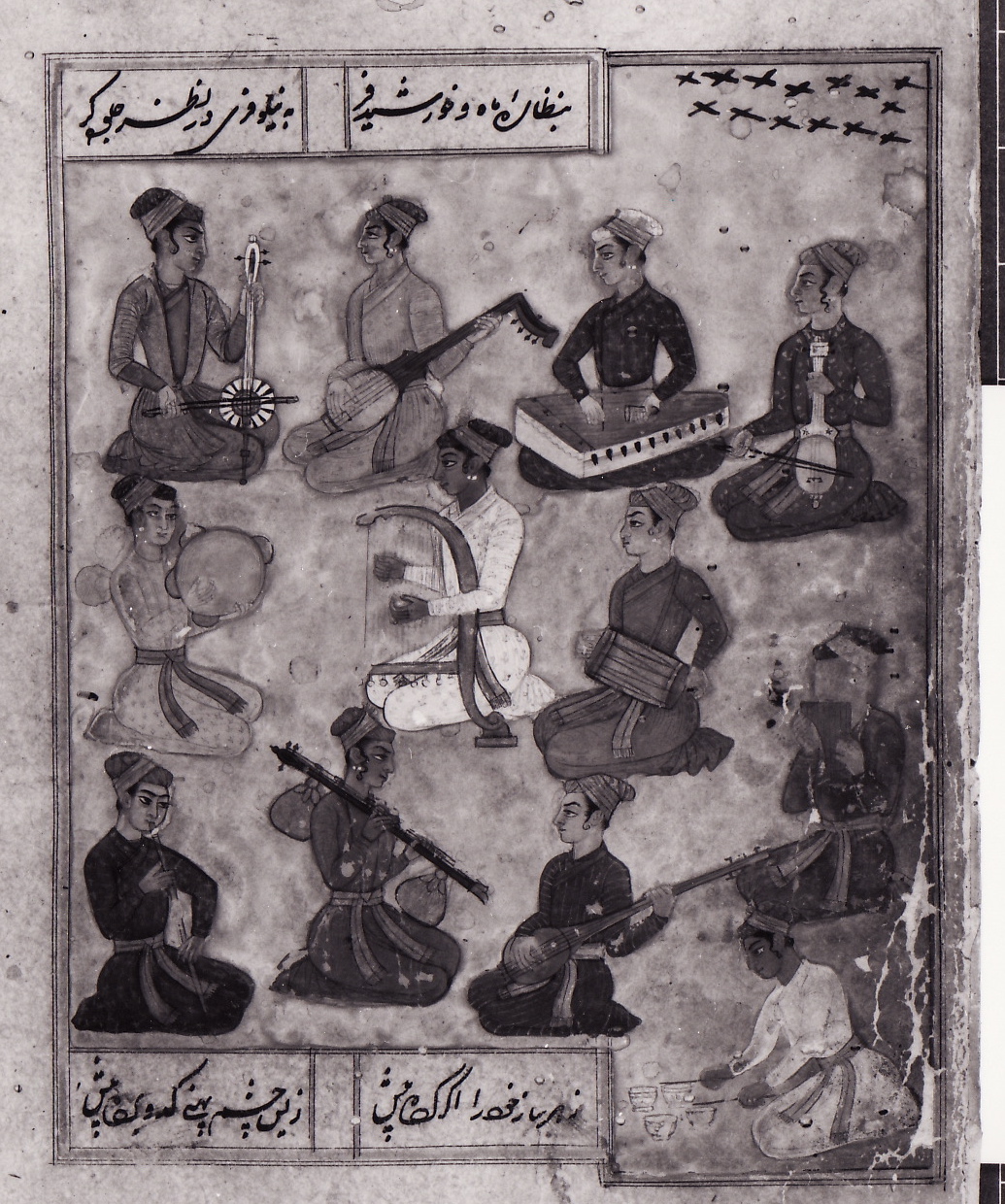FWP:
SETS== POETRY
INDEPENDENCE: {9,1}
MUSIC: {10,3}
For more on Ghalib's unpublished verses, see the discussion in {4,8x}. See also the overview index.
The chang was a kind of Persian harp. The obvious question is, was it naturally bent or curved, as Gyan Chand maintains? On his reading, the verse simply valorizes 'submission' to the beloved in every way, so that one's life, as well as one's poetry, become bowed over in homage like a curved harp. In Gyan Chand's defense, the Wikipedia article does contain one image of a chang that could be considered somewhat 'bent' or 'curved':
However, the other images seem generally to have a right-angled frame that doesn't look curved at all. It's really hard to say whether Ghalib himself would have had any knowledge of this instrument, or whether it was just one more piece of traditional furniture in the ghazal world. The only chang in the divan appears in {169,10}. Another chang verse, also revolving around bent-ness, is {63,4x}.
One reason to think that the present verse refers to a deformed harp is the basically negative sense of ḳhamīdah -- 'bent, crooked, awry'. This reading would give the verse a notably harsh and bitter tone, and would align it with {71,1} ('I am the sound of my own breaking'), and with {110,8} ('Give blessings to the King!'). The 'harmonious lament' that 'became an acquisition' would then sound poisonously sarcastic. The speaker has been brought low, he has been made to prostrate himself once too often, he is now damaged goods-- he's the music of a warped, 'bent', 'crooked' instrument. Thus the rude address ai be-ḳhabar would fit right in with the general tone. He's now lost his independence (on his cult of independence see {9,1}).
Update: my friend Allyn Miner, who has relevant music-historical expertise, says (May 2020) that indeed a chang is curved in its basic shape. She has generously sent along this image (from the Saqi-namah of Zuhuri, Deccan 1985; British Library Bl.Or. 338 f.54b):

There you have it, dear reader; you can decide for yourself. Knowing Ghalib, that's probably what he intended anyway.
.jpg)
Asi:
When at every utterance of the commandment-giver I kept bowing my head in obeisance, then this harmonious melody was obtained. Oh ignorant one, you know that I am the melody that has emerged from a bent harp. For bowing he has made the metaphor of a bent/crooked harp. This eloquent metaphor has made the verse most extremely lofty.
== Asi, p. 174